Part 1 of my post about the Portland Japanese Garden in the fall covered the entry area, the Strolling Pond Garden, and the Tea Garden.
Part 2 will take you to the Natural Garden and the Sand and Stone Garden. As before, this map from the Garden’s web site is a helpful navigation tool.
As its name suggests, the Natural Garden is the most informal part of the Portland Japanese Garden. Plantings appear less controlled than elsewhere, and I felt a sense of wilderness here that I didn’t sense in other sections. In addition, the Natural Garden is home to plants not seen in a traditional Japanese garden, including species native to Oregon. The terrain is much steeper here, and narrow trails wind up and down the hillside. In typical hide-and-reveal fashion, one intimate vignette gives way to another.
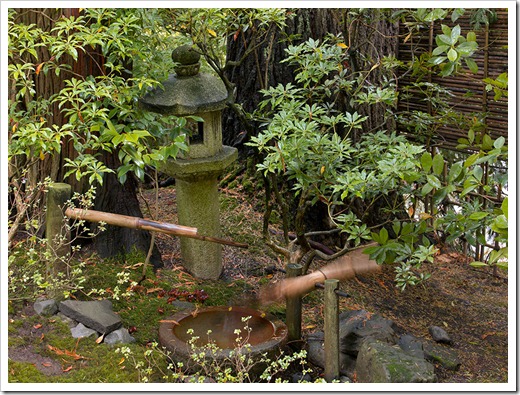 |
| Along the path to the Natural Garden, this buried-shaft lantern stands next to a stone rice mixing bowl and a deer chaser (shishi odoshi). The clacking sound of the bamboo tube hitting the rock can be heard from quite a distance. |
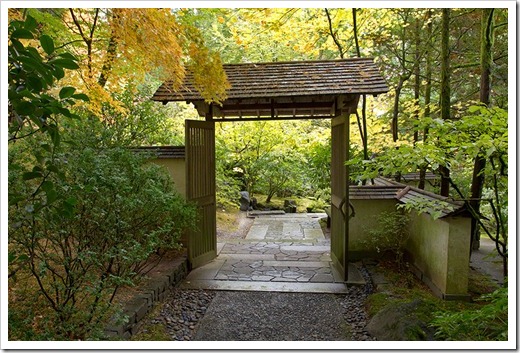 |
The Moon Gate marks the entrance to the Natural Garden.
Just beyond it, the terrain begins to get noticeably steeper. |
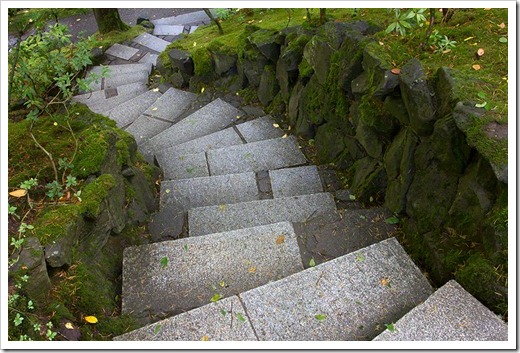 |
| Steps leading from the upper to the lower section of the Natural Garden |
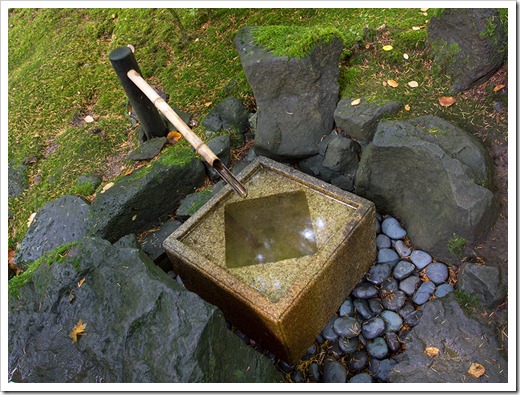 |
| Square water basin along the path descending from the upper section of the Natural Garden |
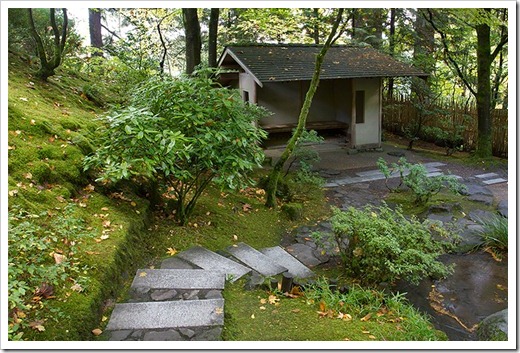 |
| The azumaya, or “waiting building,” is a tile-roofed shelter in the Natural Garden that provides a great spot to sit, rest, and enjoy the tranquility of this forest oasis |
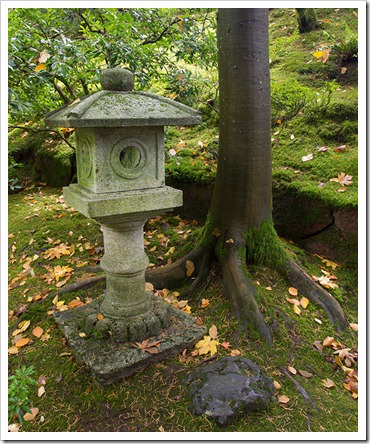 |
| Crescent Moon lantern near the azumaya |
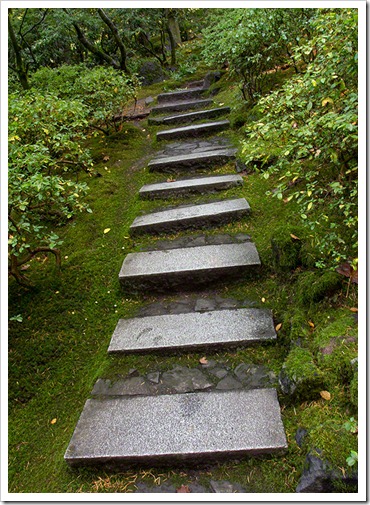 |
| Steps up the hill surrounded by azaleas |
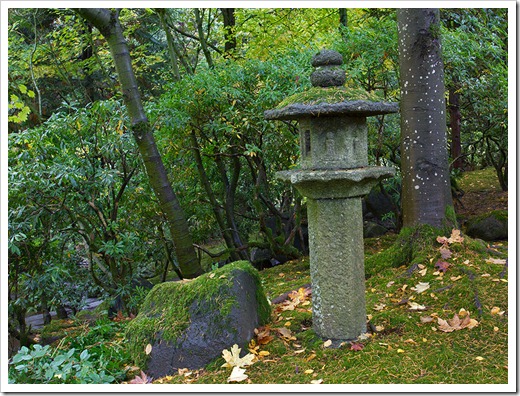 |
| Buried-shaft lantern along the trail leading up the hill from the lower section of the Natural Garden to the Sand and Stone Garden |
The Sand and Stone Garden is located at the eastern edge of the Portland Japanese Garden, halfway up the hill from the lower portion of the Natural Garden. Known as karesansui, or “dry garden,” this style of garden is often referred to a “Zen garden” because of its minimalist design. With coarse sand or fine gravel symbolizing water and a varying number of stones standing in for trees, mountains, or islands, this is the most abstract of Japanese garden styles.
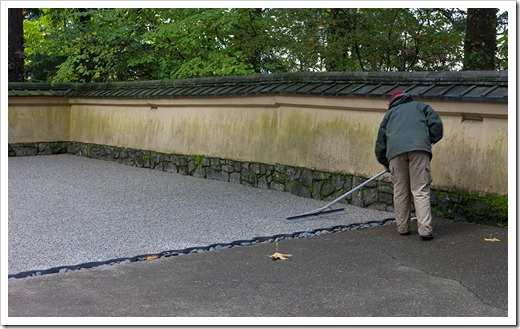 |
| I was lucky enough to find a gardener first raking the sand to get it perfectly flat… |
 |
| …then using a heavy wooden rake with blunt teeth to make concentric circles around the moss-covered stones |
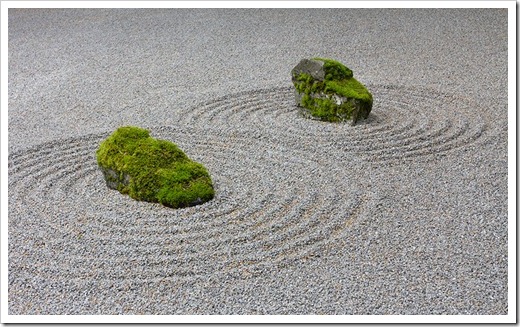 |
| When asked if she can make whatever pattern she chooses, she said yes but that it always ends up being the same pattern |
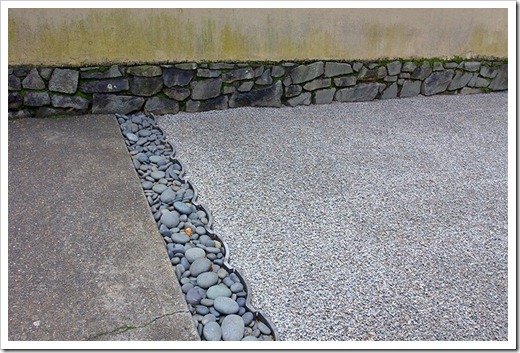 |
The expanse of sand is bordered by a bed of blue river rock and roof tiles
set upright into the ground |
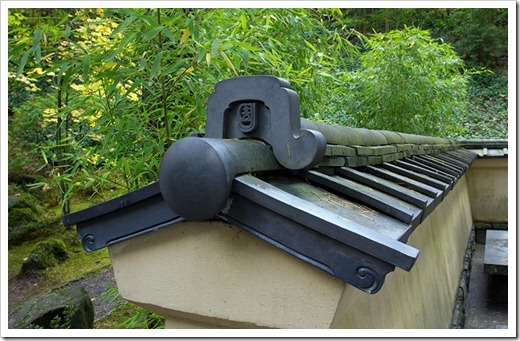 |
| Demon tile forms the end piece of the roof topping the stucco wall that encloses the Sand and Stone Garden |
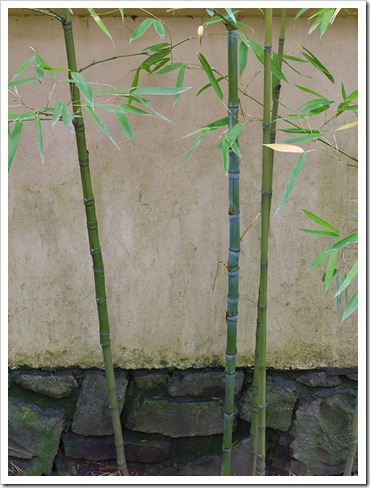 |
| Bamboo (Phyllostachys aurea) on the outside of the stucco wall. Forming a dense hedge naturally, here it is thinned vigorously so the overall impression is sparse and ethereal as opposed to lush and dense. |
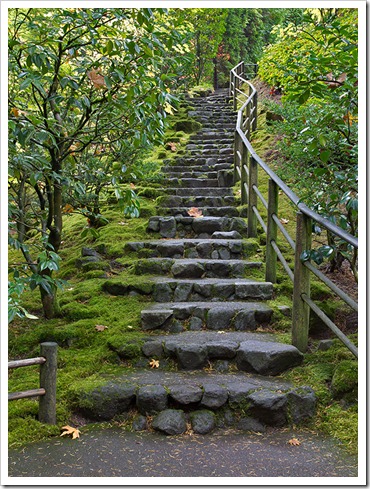 |
| Stone steps leading from the Sand and Stone Garden through the upper portion of the Natural Garden to the Flat Garden |
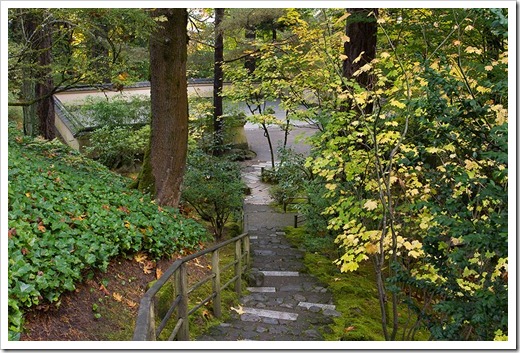 |
| Looking down toward the Sand and Stone Garden |
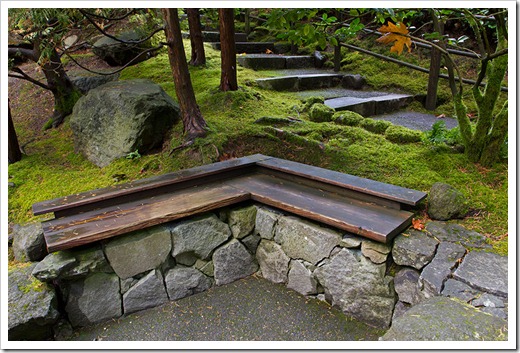 |
| This bench on top a low rock wall is an inviting spot to linger halfway up the trail from the Sand and Stone Garden |
 |
| Sand and Stone Garden viewed from the Flat Garden above it |
Related posts:
- Portland Japanese Garden: Design
- Portland Japanese Garden: Plants
- Portland Japanese Garden: Ornaments
- Portland Japanese Garden in the fall: Part 1
- Portland Japanese Garden in the fall: Part 2 (this post)
- Portland Japanese Garden in the fall: Part 3



















I'm still mesmerised by this lovely Japanese garden! The square water basin and geometric winding steps are a bit of surprise, quite modern perhaps? But very much at home to the garden :)
ReplyDeleteThere is so much to like about this garden, but I think the blocky yet "random" steps and the roof tile/blue stone border are my favorites.
ReplyDeleteI love how they use modern elements alongside the traditional. Very much what I would do.
ReplyDeleteA lot of material was rescued from other sites. The granite steps came from the old Portland Civic Center. Likewise, many shrubs and trees were donated and transplanted from people's private gardens.
I can hear the clacking of the bamboo. Like at the end of the 2nd Kill Bill movie. I loved that sound. Your photos of those beautiful steps are wonderful. They show a great deal of perspective. Again what a great garden and thank you so much for sharing!
ReplyDelete